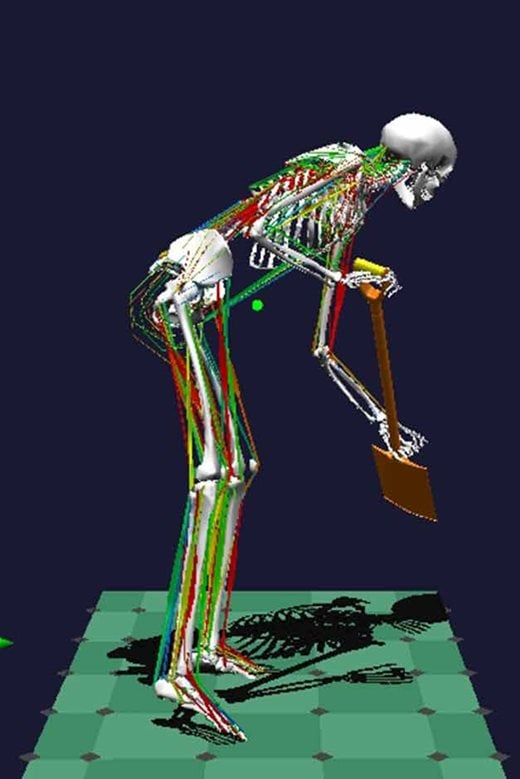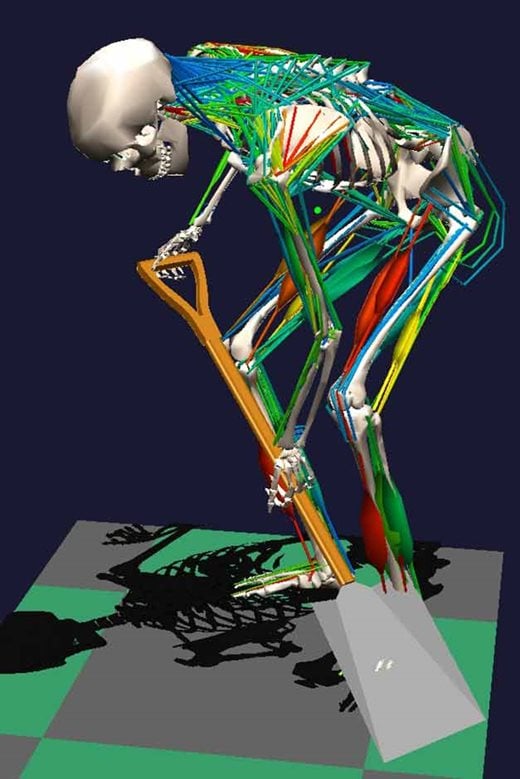Have you ever wondered why you have a bad back after digging your borders? New research sheds light on the best ways to avoid strain and injury
Working with Coventry University we found that a bad digging technique can double the load on the joints in the body, leaving you susceptible to chronic injuries.
27 million gardeners at risk?
The results of our combined study, published in the journal HortTechnology, reveal the risks the nation’s 27 million gardeners might be running if using a bad digging technique and comes at a time when more people are recognising the health benefits of gardening.
 'Hollywood' motion capture technology
'Hollywood' motion capture technology
With Coventry University we employed equipment - usually used in the production of animated Hollywood films and advanced hospital laboratories - to map the movement of gardeners while digging and measured the loads imposed on the body’s joints, bones and muscles.
The 3D optical tracking equipment involved attaching reflective “ping pong” sized balls at key locations on the gardeners body before surrounding them with high-resolution, high-speed infra-red cameras. This equipment, known as motion capture, allows the movement of the body to be captured digitally. The data from the motion tracking was then be analysed by BoB - a computer programme developed at Coventry University. BoB contains a model of the human skeleton, major joints and more than 600 of the body’s muscles associated with movement, enabling the researchers to calculate the internal loads for each participant.
Bad back? Change how you dig!
Researchers found that loads in the lumbar region of the back – where many gardeners complain of aches and pains - could be increased by half as much again for a bad posture. The shoulders were even more sensitive, where more than double the load was generated if a bad posture was used.
Large loads at joints are associated with increased risk of osteoarthritis, the most common form of joint disease.
 Regular, repetitive and bend at the knee
Regular, repetitive and bend at the knee
Results confirmed that good gardening practice involves using a regular, repetitive technique rather than erratic movements.
A good technique was found to have minimal back bend and large knee bend, whereas a bad posture was characterised by large forward bending, stretching limbs and uncontrolled motion.
Dr Paul Alexander our Head of Horticultural and Environmental Science, said: “Digging is one of the more common gardening practices ... yet we tend to rely upon common sense which can lead to gardeners complaining of aches and pains. Our findings will help us ensure that both amateurs and professionals stay digging for longer; avoiding injury, and improving efficiency.”
BBC coverage of our research

